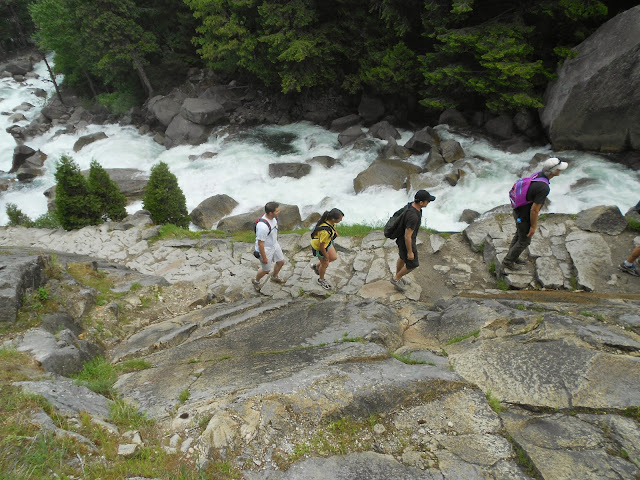Roaring
Springs is the reliable source of water that keeps visitors quenched at both
the North and South Rims of the Grand Canyon.
Today, if
many people think of a cave in the Grand Canyon, they may actually envision
Grand Canyon Caverns, located along High 66, southwest of today’s Grand Canyon
village.
However,
“Cave of vast size is found in Grand Canyon” was an April 11, 1928 headline in
the Tucson Citizen newspaper.
This cave
was actually Roaring Springs.
Three
workmen employed on building a water pumping station for the new lodge being
built atop the North Rim went inside the cave for an estimated two miles. They
only turned back, because a boat was needed to go deeper inside the mountain.
“Roaring
Springs emerges from openings in the cliffs and the water cascades down in
falls,” the story stated.
One of the
apertures is large enough to permit a man access and Bill Denson of South
Dakota went inside with a small flashlight. Seeing vast spaces and tunnels
inside, he returned outside to tell co-workers, Mack Jensen of Toquerville,
Utah and Paul Swain of Salt Lake City, what he had seen. The three secured
gasoline lanterns and extra fuel bottles and went exploring inside for four
hours.
“There is a
regular labyrinth of tunnels in there,” Jackson said. “And, we didn’t try to
explore all of them.”
They found
four connecting tunnels.
“At the
place where these four tunnels come together, there’s a big river coming down
one of them, dividing among the other three. These divide again and again, so
that all the waterfalls you see in the canyon that we call Roaring Springs are
just the ends of smaller tunnels. The one big creek supplies them all,” Jackson
said.
One place,
the walked along the river on a narrow ledge and estimated the water below to
be at least 20 feet deep.
Finally, two
miles in, they came to a large room filled entirely by the river.
“As far as
we could see, the cave and the river got bigger and bigger. The river is too
deep to wade and too cold to swim, or we would have gone further,” he said.
“The inside of the cave is very beautiful. It is filled with stalactytes and
stalagmites …”
It appears
that is the case, about a century later.
The story
also said some believe that there is a huge underground lake beneath the Kaibab
Plateau and that is what fuels Roaring Springs.
There are no
streams on the Kaibab Plateau, north of the Grand Canyon, and none on the South
Rim either, as far away as to Flagstaff.
That’s
because the limestone rock below and many sink holes absorb almost all the surface
water and take it underground.
Some tests
in the 21st Century have shown that as little as six days is all
that was required for some rainwater on the Kaibab Plateau to exit through
Roaring Springs.
The Parks
Service is also exploring using alternatives for South Rim Water that come from
the Phantom Ranch area. This includes underground testing and drilling there.
The 12 or so
miles of pipeline from Roaring Springs to Phantom Ranch suffer frequent leaks
and breaks, whereas the pipeline across the Colorado River and up the South Rim
are much more stable.
Roaring
Springs supplies a vast majority of the water for both the North and South
Rims.


































